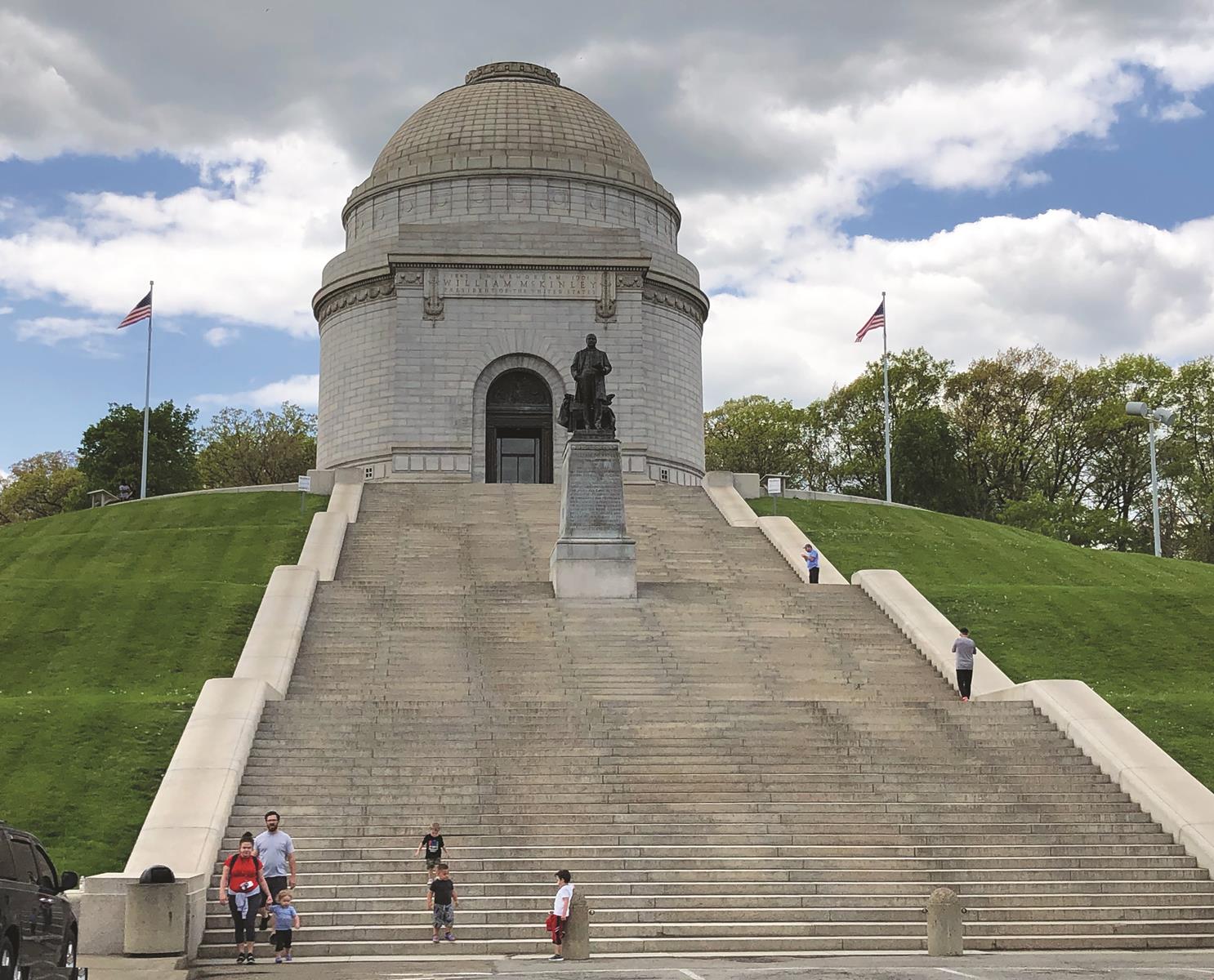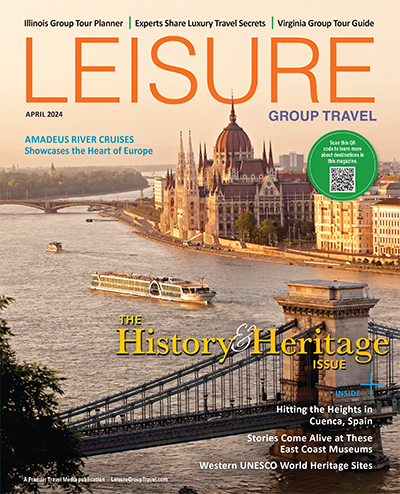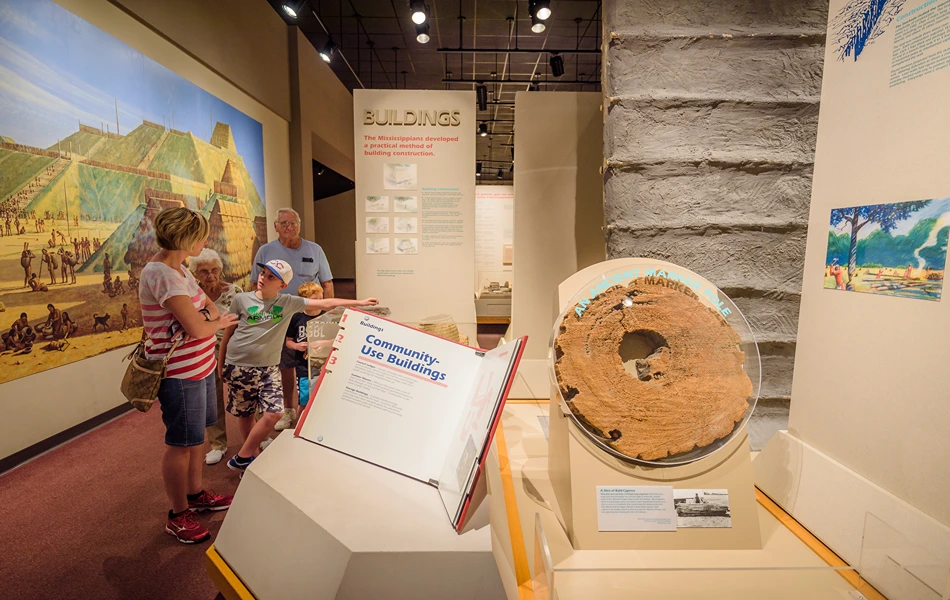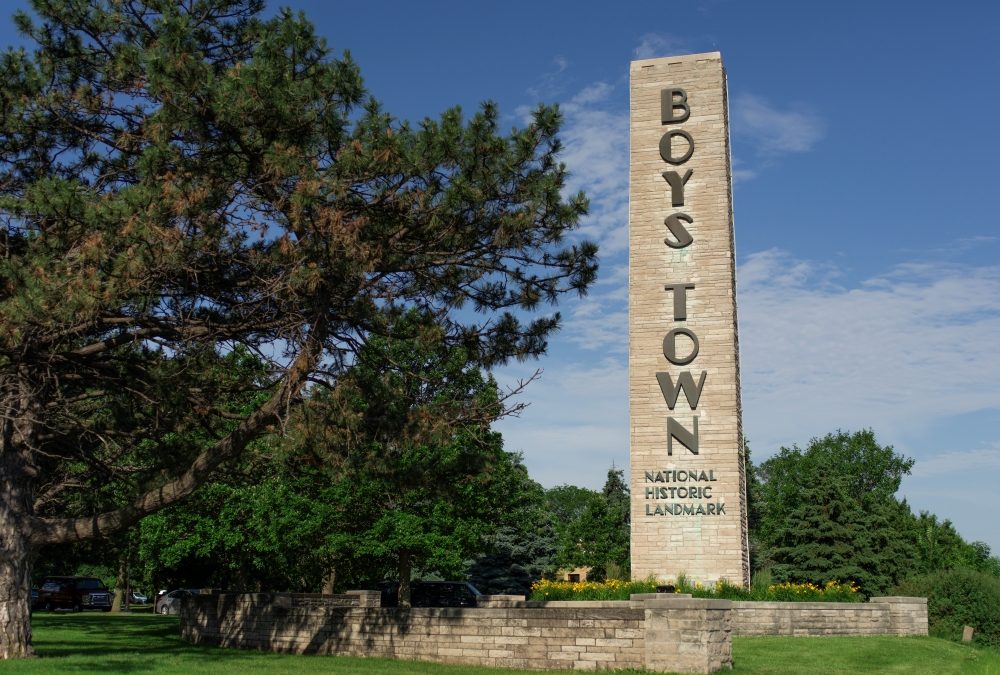Ohio, the “Mother of Presidents,” abounds with historical sites honoring native sons who made it to the White House
Of the 45 men who have served as president of the United States, eight have come from the Buckeye State. That’s a pretty impressive percentage.
A populous state with a strong economy based on both industry and agriculture, Ohio was a major force in national politics in the late 1800s and early 1900s, when, within a 52-year span, seven Ohio-born Republicans— Ulysses S. Grant, Rutherford B. Hayes, James A. Garfield, Benjamin Harrison, William McKinley, William Howard Taft and Warren G. Harding—were elected leader of the land. William Henry Harrison, the first president from Ohio (a member of the Whig Party and grandfather of Benjamin), was not born in the state but spent much of his life there; he and three of the others died in office, two of them from assassins’ bullets.
While most of these Ohioans have faded into obscurity, they played important roles in shaping American history, even if they didn’t make it into the pantheon of presidents celebrated in popular culture and highly rated by historians.
William McKinley
“William McKinley is an often overlooked president because he is so overshadowed by his vice president and successor, Theodore Roosevelt,” says Ally Carlson of the McKinley Presidential Library & Museum in Canton, Ohio, a city best known as home to the Pro Football Hall of Fame.
“Roosevelt, as we know, was big and brash, while McKinley was a quiet, reserved Victorian gentleman,” she says. “However, a lot of the things that Roosevelt took credit for were things McKinley really set in motion.” (McKinley expanded America’s footprint on the world stage, added territories and started negotiations for building the Panama Canal.)
The Canton museum’s McKinley Gallery showcases items from the world’s largest collection of McKinley memorabilia. In addition to exhibit cases, the room contains re-creations of the 25th president’s Canton law office, parlor in his Canton home and White House office, all with original furnishings. A pushbutton kiosk allows visitors to activate animatronic figures of McKinley and his wife, Ida. Positioned in the parlor, the robotic couple (a bit creepy, to be honest) converse on topics ranging from education to the 1901 Pan-American Exposition in Buffalo, New York, where he was fatally shot by a 28-year-old anarchist. Of note behind glass is Ida’s diamond tiara, which the museum in 2014 was able to purchase for $43,000 from Rick Harrison of the Pawn Stars reality TV show.
The McKinley museum doubles as a science center and regional history repository, and even has planetarium shows. Crowning the adjacent hill is the McKinley National Memorial (shown above), an imposing domed monument containing the entombed remains of William and Ida McKinley.
In downtown Canton, the Ida Saxton McKinley House, where Ida grew up and lived with William during the 14 years he served in Congress, is part of First Ladies National Historic Site, the only museum and library devoted to the presidents’ wives. Its Education Center currently is displaying replica inaugural gowns; a Smithsonian film about the first ladies plays in the 80-seat theater.
Warren G. Harding
Tour organizers who want to impress their travelers with a gleaming new attraction should pencil in the Warren G. Harding Presidential Library & Museum in Marion. Unveiled in May, the stately white-brick building—three years in the making— showcases the accomplishments and touches on the scandals of the last president from Ohio, who owned the Marion Daily Star newspaper. After viewing a 15-minute film, visitors move on exhibits that document Harding’s personal life and public career, from boyhood to death of a heart attack that cut short his term in office.
Distinguishing this presidential museum from others in Ohio, thanks to technological advancements at the time, is vintage newsreel footage with sound. Large-screen video monitors show coverage of Harding’s 1920 campaign, inauguration and funeral. Giant black-and-white photo panels also breathe life into the galleries, and a touchscreen allows visitors to access details about artifacts behind glass, such as Harding’s golf club and inlaid-wood humidor.
The Harding Home, located steps from the museum, just re-opened after a major restoration. Guided tours start on the front porch, which became famous in Harding’s 1920 “Front Porch Campaign,” when 600,000 citizens in a three-month period flocked to Marion, mostly by train, to hear the candidate speak (with no microphone) from the top step. Newsreel clips in the museum show crowds of supporters, marching bands, women’s suffragettes and visiting celebrities.
Harding’s campaign, you learn, was the first to use endorsements and appearances by dignitaries, sports and military heroes, and show business stars in a significant way. Al Jolson, the 1920s’ leading entertainer, sang the official campaign song, “Mr. Harding, You’re the Man for Us.”
Winning in a landslide against Democrat James Cox, Harding went on to become a popular president. His image was tarnished after his death, however, when the public started learning about corruption by two former cabinet members and two extramarital affairs, one resulting in the birth of a daughter.
Tour guide Shannon Morris, a former high school teacher, says he gets asked about the affairs but does not shove them under the rug. “People are often surprised we talk about that, but it’s the truth, so we cover it,” he says. “And that’s the way it should be.”
A mile or so from the Harding museum and home stands the majestic Harding Memorial, the final resting place of the 29th president and his wife, Florence. Ringed by 46 Doric columns, the circular white marble monument, open to the sky, is suggestive of an ancient Greek temple. It was dedicated in 1931 by President Herbert Hoover before a crowd of 100,000.
James A. Garfield
James A. Garfield National Historic Site in Mentor spotlights another Ohio president who died in office. Assassinated by a madman at a Washington, D.C. train station just four months after taking the oath in March of 1881, the nation’s 20th president lingered in bed for 10 weeks before succumbing to his gunshot wounds.
Exhibits in the visitor center, housed in the former carriage house and stable of Garfield’s farm, include commemorative souvenirs that reflected the public’s need to honor their fallen leader. Among memorial items are glass plates, glazed pottery, paper mourning ribbons and a plaque made of wood from the funeral catafalque. Also displayed are a bronze death mask, condolence letter from Queen Victoria, and mourning bonnet belonging to Garfield’s wife, Lucretia. An 18-minute biographical movie in the theater includes a dramatization of the shooting.
The visitor center sits behind the Garfield home, the centerpiece of the 160-acre farm that was dubbed Lawnfield by reporters who covered his 1880 precedent-setting front porch campaign. Ranger-guided house tours are available, while cell-phone tours of Lawnfield’s shady grounds (now eight acres) provide another perspective.
Rutherford B. Hayes
The leafiest presidential site in Ohio, though, is the Rutherford B. Hayes Presidential Library & Museums in Fremont, where a 25-acre public park with towering trees—a certified arboretum—surrounds Hayes’s 31- room Victorian mansion. One path leads to the tomb of the 19th president and First Lady Lucy Hayes. The six iron gates to the Spiegel Grove estate, a property Hayes inherited from his uncle, are original to the White House.

The six iron gates at Rutherford B. Hayes Presidential Library & Museums in Fremont, Ohio once protected the White House in Washington, D.C. (Randy Mink Photo)
Besides guided tours of the immaculately preserved brick residence, where 90 percent of the furnishings are original to the family, groups can take a guided or self-guided tour of the neighboring library/museum building, the first created (in 1916) to house presidential papers. Also available are a grounds walk that can be combined with a craft activity or tea, a “Backstairs” house tour from the servants’ viewpoint, and tours focusing on Lucy Hayes, Victorian mourning practices and other themes.
The museum awes visitors with the scope of its collections, as Hayes and his family had a sense of history and love of objects. Pieces in the treasure house range from the presidential carriage and White House china to souvenirs from the 1876 Philadelphia Centennial International Exhibition. Other items include Hayes’s Civil War gear (saddle, revolver, sword, drinking cup) and Army coat with a bullet hole—he was wounded four times. Even on display are the ice skates worn by Rutherford’s twin brother when he drowned in a skating accident at age 9.
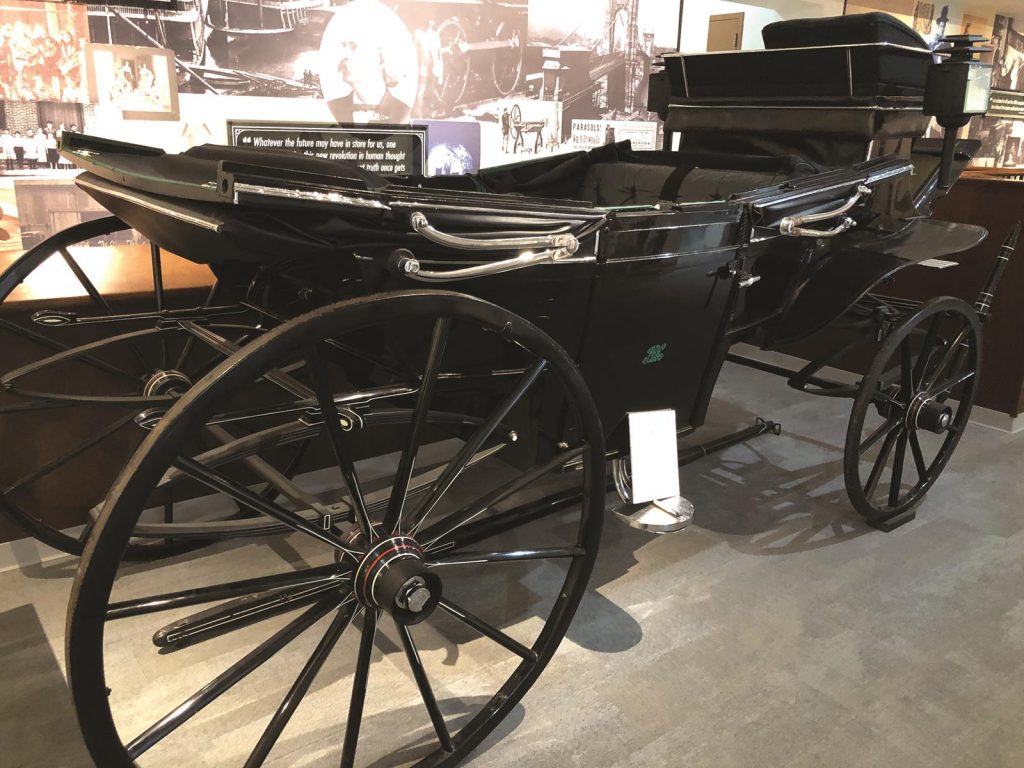
Carriage belonging to Rutherford B. Hayes, America’s 19th president. (Randy Mink Photo)
Referring to the museum’s vast collections, Christie Weininger, executive director of the Hayes complex, said, “I feel that today he (Hayes) might have been a curator or be doing some kind of museum work.”
Other stops on the Ohio presidential trail include the William Howard Taft National Historic Site, Cincinnati; William Henry Harrison Tomb, North Bend; U.S. Grant Birthplace, Point Pleasant; U.S. Grant Boyhood Home & Schoolhouse, Georgetown; National McKinley Birthplace Memorial & Library, Niles; Lucy Hayes Heritage Center, Chillicothe; James A. Garfield Birthplace, Moreland Hills; and Garfield Memorial in Cleveland’s Lake View Cemetery.
By Randy Mink, Senior Editor
For more travel ideas, download our current issue of Leisure Travel Guide.


